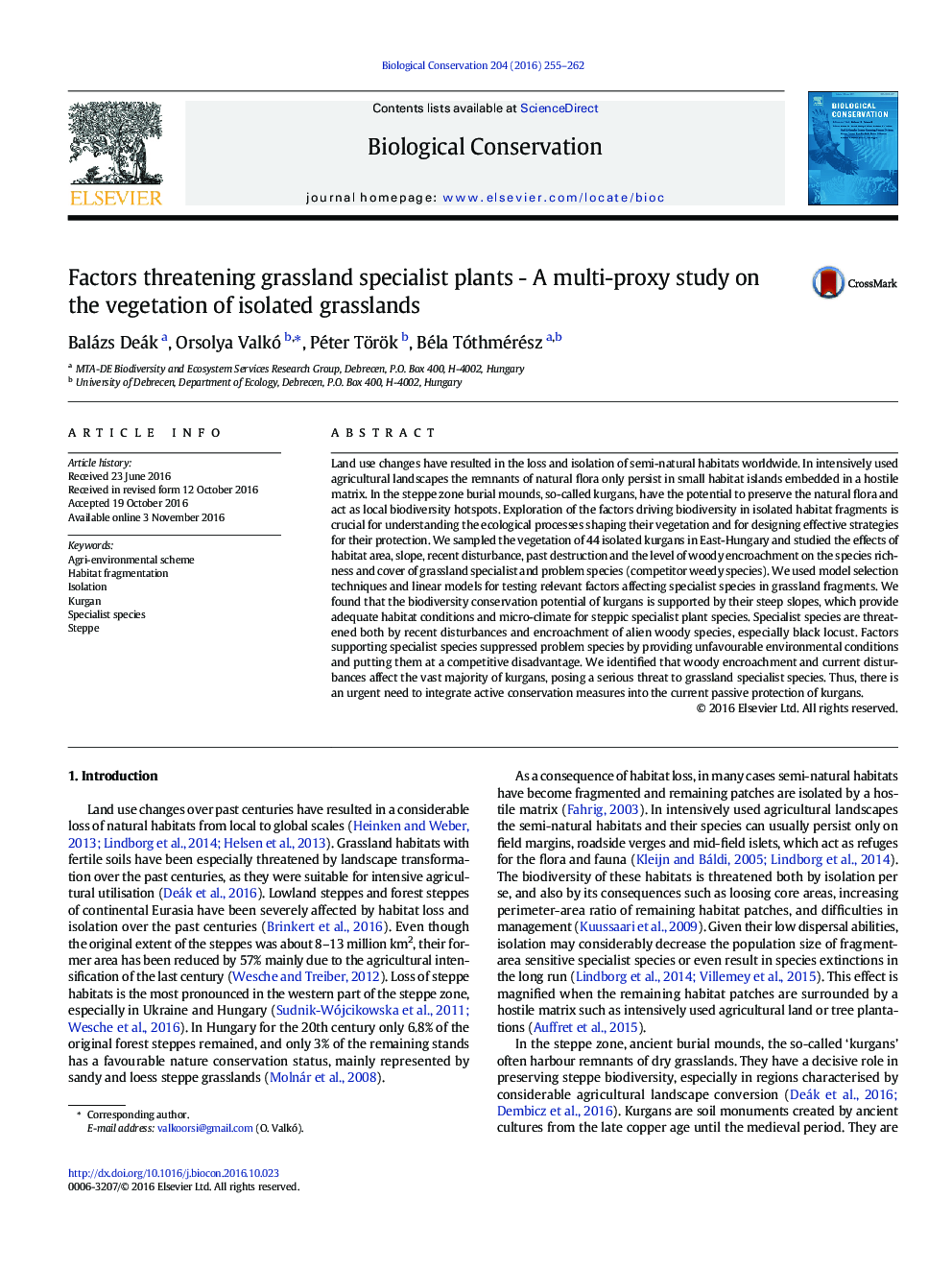| کد مقاله | کد نشریه | سال انتشار | مقاله انگلیسی | نسخه تمام متن |
|---|---|---|---|---|
| 5743401 | 1412305 | 2016 | 8 صفحه PDF | دانلود رایگان |
- We studied the vegetation of 44 isolated grassland fragments on kurgans.
- We studied the effects of local environmental factors on their species composition.
- Steep slopes of kurgans prevented ploughing and preserved several grassland species.
- Grassland species were most threatened by disturbance and alien woody encroachment.
- Improved measures are needed for the biodiversity conservation of kurgans.
Land use changes have resulted in the loss and isolation of semi-natural habitats worldwide. In intensively used agricultural landscapes the remnants of natural flora only persist in small habitat islands embedded in a hostile matrix. In the steppe zone burial mounds, so-called kurgans, have the potential to preserve the natural flora and act as local biodiversity hotspots. Exploration of the factors driving biodiversity in isolated habitat fragments is crucial for understanding the ecological processes shaping their vegetation and for designing effective strategies for their protection. We sampled the vegetation of 44 isolated kurgans in East-Hungary and studied the effects of habitat area, slope, recent disturbance, past destruction and the level of woody encroachment on the species richness and cover of grassland specialist and problem species (competitor weedy species). We used model selection techniques and linear models for testing relevant factors affecting specialist species in grassland fragments. We found that the biodiversity conservation potential of kurgans is supported by their steep slopes, which provide adequate habitat conditions and micro-climate for steppic specialist plant species. Specialist species are threatened both by recent disturbances and encroachment of alien woody species, especially black locust. Factors supporting specialist species suppressed problem species by providing unfavourable environmental conditions and putting them at a competitive disadvantage. We identified that woody encroachment and current disturbances affect the vast majority of kurgans, posing a serious threat to grassland specialist species. Thus, there is an urgent need to integrate active conservation measures into the current passive protection of kurgans.
Journal: Biological Conservation - Volume 204, Part B, December 2016, Pages 255-262
